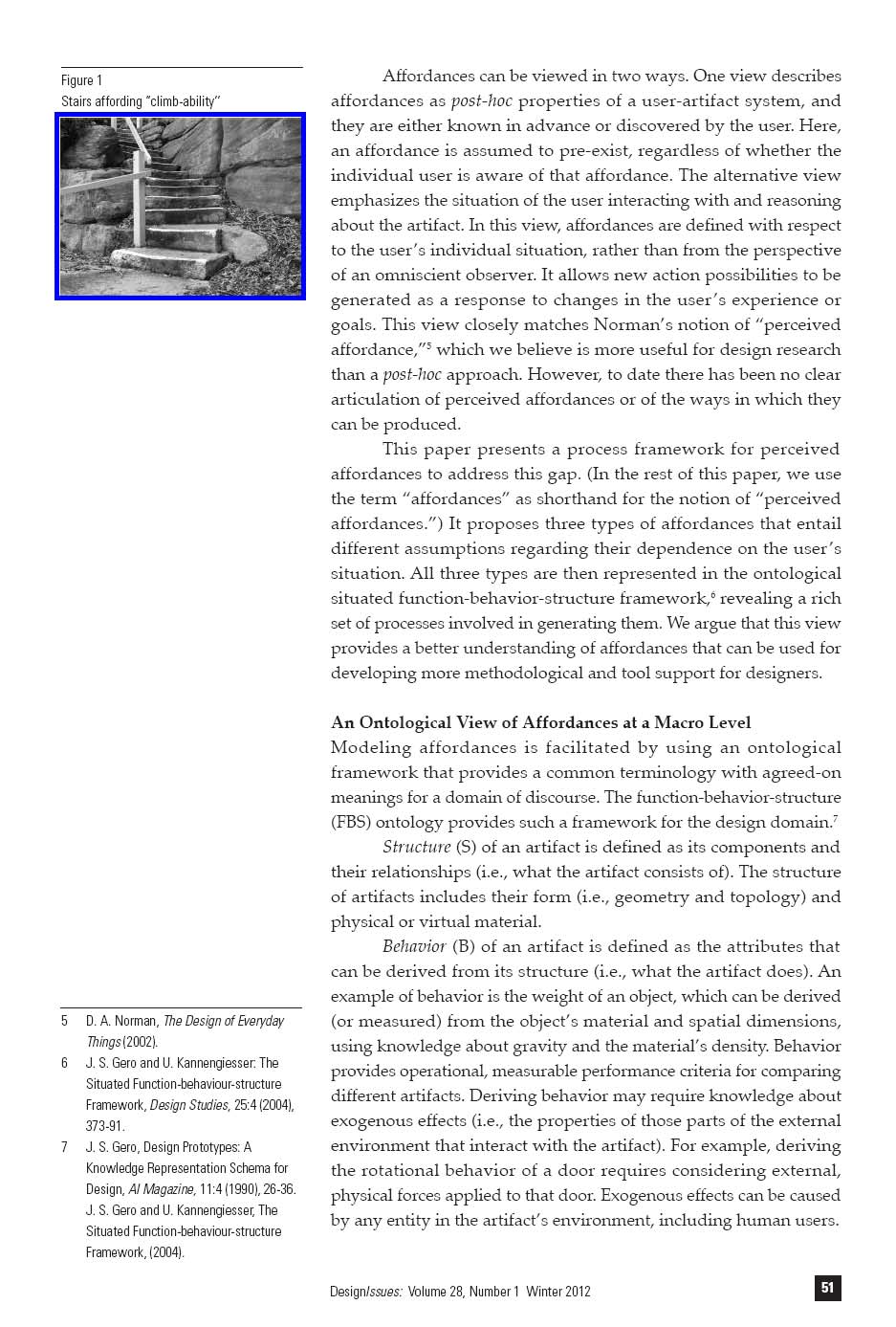
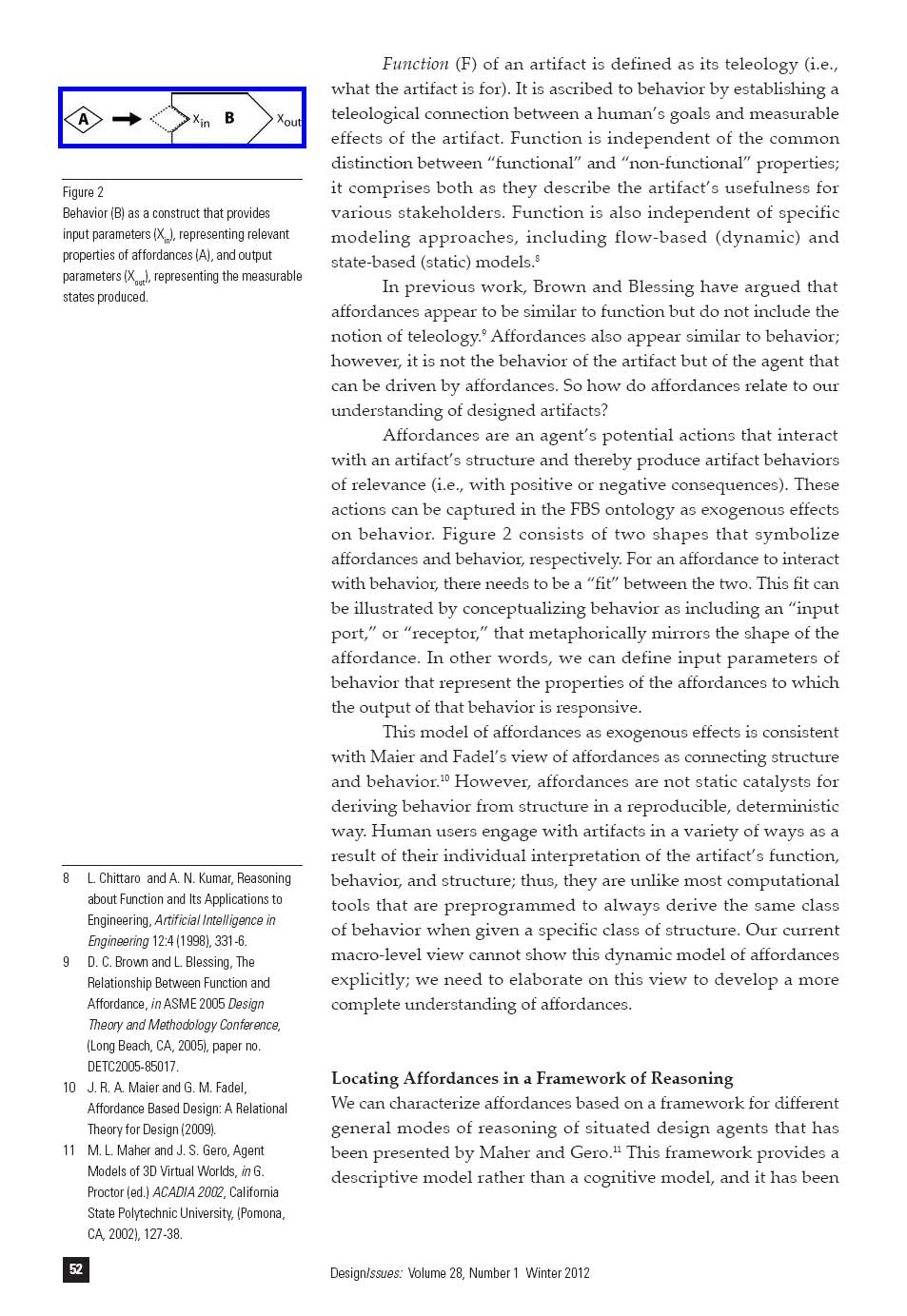
used for elaborating various aspects of situatedness in design. The
framework distinguishes between reflexive, reactive, and reflective
modes of reasoning:
• Reflexive reasoning is a direct response of the agent to
specific sets of stimuli to which it is exposed. Reasoning
here does not entail any internal processing or decision
making; it is merely a mapping of sensory input to actions
performed by the agent’s effectors. Examples include
“hard-wired,” biological reflexes and habituated responses
to recurring stimuli. We can ascribe a high degree of
confidence to reflexive reasoning that the resulting actions
will produce the desired outcomes. This confidence is
implicit in the actions rather than in an explicit, cognitive
state of the agent.
• Reactive reasoning involves a limited form of interaction
between various of the agent’s internal representations.
This interaction can be viewed as the process of selecting
from several alternatives the most appropriate schema,
given the stimuli presented. The need for decision making
leads to a lower degree of confidence associated with the
outcomes of the agent’s actions. As a result, agents assess
their decisions by monitoring the effects of their actions and
comparing them against a set of criteria.
• Reflective reasoning involves a more significant amount of
interaction between a model of the external world and the
agent’s goals and concepts. It is a construction process that
uses filtering, emphasizing and distorting certain aspects
of the external cues, driven by changes in the agent’s
expectations. The outcomes of actions devised by this mode
of reasoning produce new expectations that provide new
criteria for assessing these actions.
In computational experiments, Gero and Peng have shown that
reflectively produced responses are grounded as new experiences
that move toward being reactive as they are used in subsequent
interactions,12 and reactively produced responses similarly move
toward being reflexive as they are successful y used in subsequent
interactions.
Based on the three modes of reasoning, we can derive three
classes of affordances: reflexive, reactive, and reflective ones.
Reflexive Affordances
The notion of affordance as originally proposed by Gibson is a
“direct” form of perception that is often interpreted as involving
12 J. S. Gero and W. Peng, Understanding
a very limited amount of internal processing. This description is
Behaviors of a Constructive Memory
consistent with the reflexive mode of reasoning, and consequently
Agent: A Markov Chain Analysis,
Knowledge-Based Systems 22:8 (2009),
610-21.
DesignIssues: Volume 28, Number 1 Winter 2012
53

we call these affordances reflexive. All stimuli provided by the
artifact are directly mapped onto the user’s actions. The fit between
artifact and user is via the user’s sensorimotor system. This fit is
most evident for affordances of physical objects that mirror the
shapes of the human body, such as shoes and gloves. The sensory
Figure 3
data (here, the form of the artifact) directly fits with the user’s
Reflexive affordance modeled within behav-
effectors (here, the human’s feet and hands). The affordance of
ior as an input parameter A1 with a fixed
“wear-ability” in these cases can be labeled “intuitive.”13
(default) value ai
Most affordances rely less on a strictly physical fit between
artifact and user and instead involve more abstract classes of
“fit” that require some internal representations (e.g., patterns and
schemas) that match the external stimuli presented to the user.
This type of connection is consistent with Norman’s emphasis on
the role of users’ existing internal models in their perception of
affordances.14 For example, if a user has previously been exposed to
a number of door handles with similar shapes, sizes, positions, and
orientations, they will have constructed a schema that represents this
class of artifact. When the user later comes across a particular door
handle that matches this schema, the user can reflexively perform a
set of actions associated with the schema, such as turning, pulling,
pushing, or sliding the handle. The affordances of “turn-ability,”
“pull-ability,” “push-ability,” and “slide-ability,”15 can be seen as
outcomes of reflexive reasoning processes that are precursors of
these actions. Their parameters have default values (i.e., all actions
are executed uniformly). Using the idea of parameterized behavior
introduced in Figure 2, Figure 3 shows, how a reflexive affordance
can be modeled as an input parameter with a fixed value.
Reactive Affordances
A reactive af ordance is an action possibility that is selected from
among a set of action possibilities. The process of selection is
independent of changes in the user’s current goals and expected
classes of concepts. Variations over time are often the result of the
user acquiring new knowledge from previous interactions.
Reactive affordances can be seen as the outcomes of a search
process, analogous to the notion of search in routine or parametric
13 A. Blackler, V. Popovic and D. Mahar,
designing. The basis for searching affordances is the availability of
Towards a Design Methodology
a range of instances of a class of action possibilities, and the ability
for Applying Intuitive Interaction,
to assess and then select different instances using a set of criteria.
in K. Friedman, T. Love, E. Côrte-Real
Instances of a class of action possibilities differ in the values these
and C. Rust (eds) Proceedings of
action possibilities assign to parameters of that class.
WonderGround: 2006 Design Research
Searching affordances can be carried out internally using
Society International Conference,
(Lisbon, Portugal, 2006).
thought experiments, or externally using physical experiments.
14 D. A. Norman, The Design of Everyday
Every experiment consists of generating an action possibility
Things (2002).
and then testing it according to a set of criteria. If it is found to
15 A. Koutamanis, Buildings and
be unsatisfactory, the user can iteratively select and test different
Affordances, in J. S. Gero (ed.)
Design Computing and Cognition ’06,
(Springer-Verlag, Dordrecht, 2006) 345-64.
54
DesignIssues: Volume 28, Number 1 Winter 2012
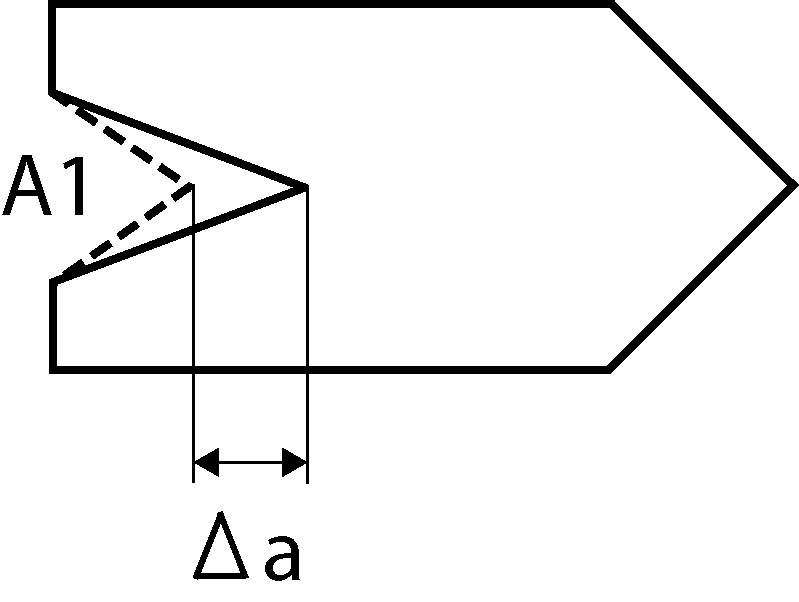
action possibilities. For example, someone wanting to unlock a
previously unknown door may turn the key the wrong way (say,
clockwise). Upon recognizing the initial failure to unlock the door,
the user selects an alternative action possibility (e.g., turning the
key counter-clockwise), tests it, and finds that it successfully
Figure 4
unlocks the door. The expectation that the key is to be turned has
Reactive affordance modeled within behavior
not changed during this process—only a parameter of this action
as an input parameter A1 with a range of
(the direction of turning) has changed its values (from clockwise to
values ∆a.
counter-clockwise). Other examples of parametrically varying the
same action possibility include turning the key with different forces,
different speeds, and different fingers. Figure 4 shows how a reactive
affordance can be modeled within behavior as an input parameter
with varying values.
Reflective Affordances
Reflective af ordances involve changes in the user’s expectations
generated by different situations. Situations are processes that
influence what goals and concepts are constructed and how agents
interpret and interact with their environment.16 For example, users
of office doors are likely to respect the privacy of the people behind
these doors; as a result, the new affordance of “knock-ability” may
be formed, making the users knock on the door before entering.
Other situations (e.g., the imminent threat of an armed hold-up)
may produce the new goal of blocking a door rather than walking
through it and the new affordance of “jam-ability” (e.g., by jamming
a chair underneath the door handle). Thus, different situations
lead to different user expectations that can then produce different
affordances. “Hidden affordances” (i.e., ones for which obvious
perceptual cues are not provided by the artifact)17 can be viewed as
instances of reflective affordances.
The notion of exploration in non-routine or conceptual
16 J. S. Gero and G. J. Smith, Context,
designing can be applied to describe how users “discover” new
Situations, and Design Agents,
affordances via reflective reasoning. Exploration creates new
Knowledge-Based Systems 22:8 (2009),
expectations related to classes of action possibilities and their criteria
600-9.
for assessment. It is non-routine because the user can no longer rely
17 W. W. Gaver, Technology Affordances,
solely on an existing set of expectations. Exploration can be modeled
in S. P. Robertson, G. M. Olson and
J. S. Olson (eds) Proceedings of the
as modifying the state space of action possibilities.
SIGCHI Conference on Human Factors in
Exploration can be carried out internally using thought
Computing Systems: Reaching through
experiments, or externally using physical experiments. The latter has
Technology, (New Orleans, LA,1991),
been studied in developmental psychology and has been found to
79-84.
involve “exploratory activities.”18 For example, infants explore their
18 E. J. Gibson, Exploratory Behavior in the
environment through seeing, reaching, grasping, and tasting, among
Development of Perceiving, Acting, and
the Acquiring of Knowledge, Annual
other actions. Discovering new door-opening mechanisms (e.g.,
Review of Psychology 39 (1991), 1-42.
button-operated automatic doors) requires a more fine-tuned but
19 W. W. Gaver, Technology Affordances,
still exploratory set of actions. The exploratory nature of reflective
(1991).
affordances can enable a user to recognize “false affordances”19 or
20 J. J. Gibson, The Ecological Approach
“misinformation”20 provided by the artifact.
to Visual Perception, (Houghton Mifflin,
Boston, 1979).
DesignIssues: Volume 28, Number 1 Winter 2012
55
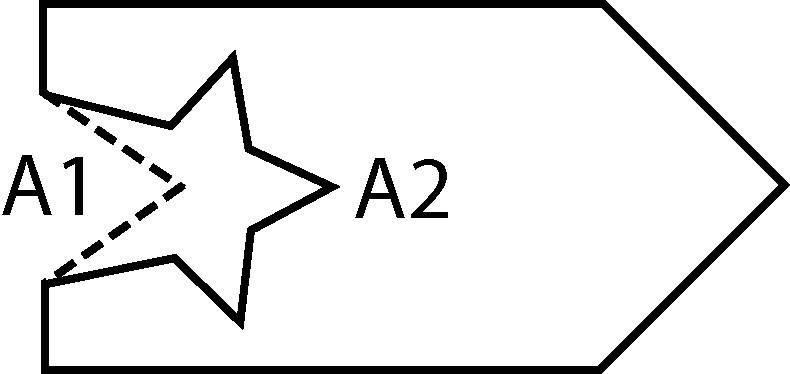
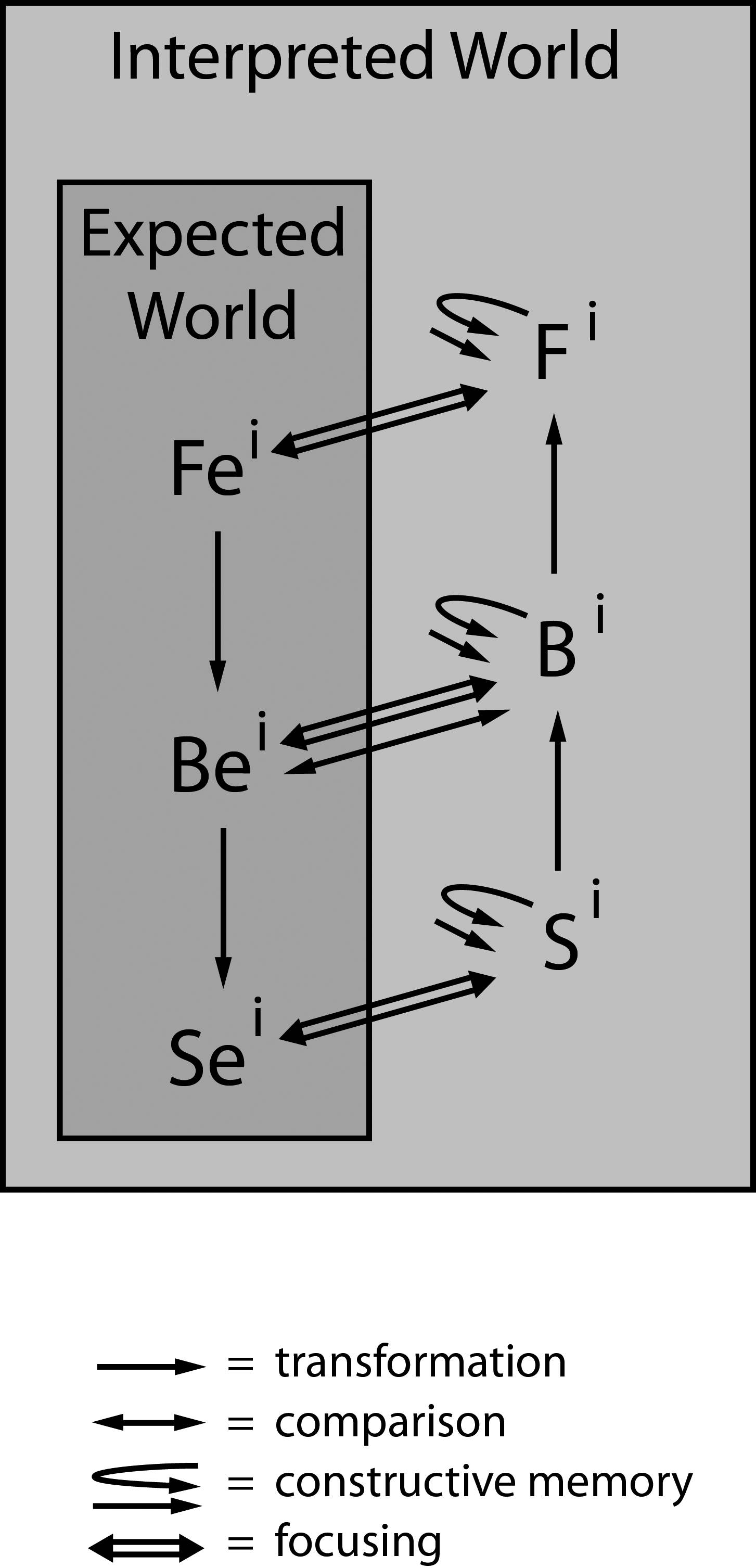
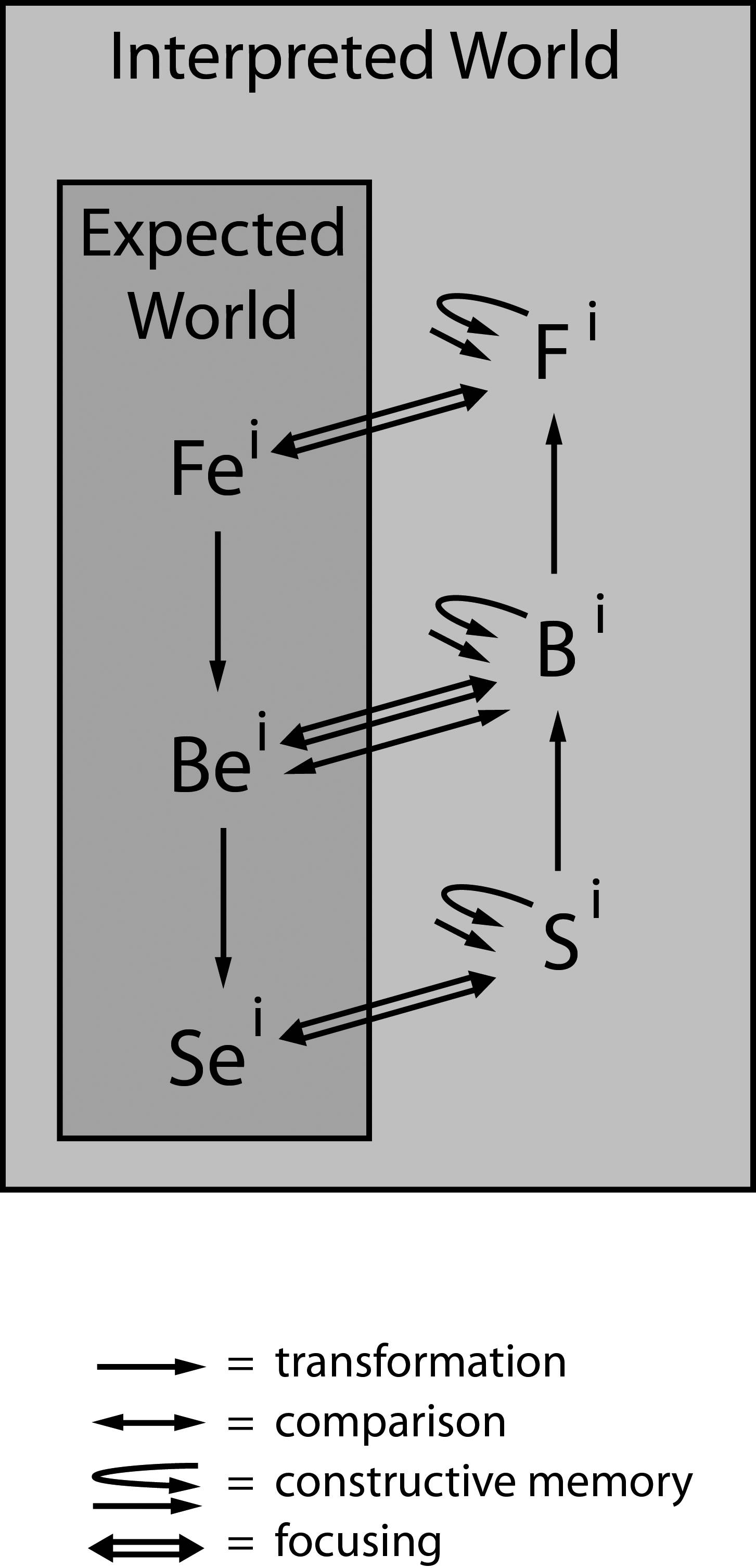
Figure 5 shows how a reflective affordance can be modeled
within behavior as a new type of input parameter.
An Ontological View of Affordances at a Micro Level
We can develop an ontological framework of affordances that goes
Figure 5
beyond the narrow view of affordances as catalysts for deriving fixed
Reflective affordance modeled within behav-
and known behaviors. This view captures reflexive affordances but
ior as a new type of input parameter A2, here
not reactive or reflective ones. However, the situated FBS framework
substituting the previous type A1.
developed by Gero and Kannengiesser can be used to capture all
three classes of affordances.21
The Situated FBS Framework
This section provides a brief description of the situated FBS
framework; for more information, see Gero and Kannengiesser.22
Figure 6 introduces two “worlds:” an interpreted world that
represents current (“as-is”), past (“as-was”), and hypothetical
(“as-could-be”) states of the world, and an expected world that
represents desired (“to-be”) states of the world for the current
design interaction. The different states of the world(s) are described
using the concepts of function, behavior, and structure of the design
representations. In the interpreted world, behavior (Bi) is derived
from a given or hypothetical structure (Si), and function (Fi) is
derived from a given or hypothetical behavior (Bi). In the expected
world, expectations are produced about what behaviors (Bei)are
Figure 6
Function, behavior, and structure in the
needed to achieve desired functions (Fei), and what structures (Sei)
interpreted world (Fi: interpreted function,
are needed to exhibit desired behaviors (Bei). The expected world
Bi: interpreted behavior, Si: interpreted
is a subset of the interpreted world, as indicated by their nesting in
structure) and the expected world (Fei:
Figure 6. Accordingly, Fei, Bei, and Sei are defined as subsets of Fi, Bi,
expected function, Bei: expected behavior,
and Si, respectively.
Sei: expected structure).
In addition to the transformations between function,
behavior, and structure within the two worlds, Figure 6 shows a
number of additional processes:
• Focusing selects subsets of Fi, Bi, and Si to be used as Fei,
21 J. S. Gero and U. Kannengiesser, The
Bei, and Sei. Once selected, a subset is not fixed but can be
Situated Function-behaviour-structure
changed by focusing on different Fi, Bi, or Si.
Framework (2004).
• Comparison determines whether an “as-is” state of the
22 J. S. Gero and U. Kannengiesser, The
Situated Function-behaviour-structure
world is consistent with a “to-be” state of the world. This
Framework (2004).
process compares Bei and Bi, as it is the behavior level
23 J. Dewey, reprinted in 1981, The Reflex
that provides measurable attributes for evaluating
Arc Concept in Psychology, Psychological
different artifacts.
Review 3 (1896), 357-70. F. C. Bartlett,
• Constructive memory can produce new Fi, Bi, and Si. This
reprinted in 1977, Remembering: A Study
process represents a richer notion of memory than simple
in Experimental and Social Psychology,
(Cambridge University Press, Cambridge,
recall via indexing. It includes the role of subjective,
1932). I. Rosenfield, The Invention of
individual experience in constructing new concepts that
Memory, (Basic Books, New York, 1988),
are tailored to the agent’s current situation.23 Constructive
W. J. Clancey, Situated Cognition:
memory can be modeled using the idea of intertwined
On Human Knowledge and Computer
Representations, (Cambridge University
Press, Cambridge, 1997).
56
DesignIssues: Volume 28, Number 1 Winter 2012


data-push and expectation-pull,24 which is denoted
in Figure 6 using a combined straight-and-returning
arrow symbol.
Figure 7 is an extension of Figure 6. It adds the external world,
which consists of things outside the agent, including the functions,
behaviors, and structures (Fe, Be, and Se) of artifacts that the agent can
interact with.25 The external world also includes requirements on the
functions, behaviors, and structures (FRe, BRe, and SRe) of artifacts.
The process numbers in Figure 7 are labels only and do not represent
an order of execution.
Adding the external world introduces the processes that
connect it with the expected world and the interpreted world:
• Action produces Fe, Be, and Se according to Fei, Bei, and Sei.
Action producing Be is the execution of expected design
actions.
• Interpretation uses Fe, Be, and Se to produce Fi, Bi, and Si using
the same “push-pull” idea as for constructive memory: The
results of interpretation are not simply “pushed” by what
exists in the external world; instead, they emerge from the
interaction of “push” and “pull.” Thus, the same Fe, Be, and
Se can be interpreted differently at different times, leading
to changes in the Fi, Bi, and Si generated.
Figure 7
The situated FBS framework that includes
Locating Affordances in the Situated FBS Framework
function, behavior, and structure in the exter-
The situated FBS framework is general enough to capture the
nal world (Fe: external function, Be: external
activities of a user interacting with an artifact because the notions
behavior, Se: external structure, FRe: external
of interpreted and expected worlds are independent of any
requirements on function, BRe: external
specific agent and can relate to the designer, the user, or any other
requirements on behavior, SRe: external
requirements on structure).
stakeholder. However, describing users’ interactions with the artifact
requires two specializing assumptions:
1. External structure and external behavior are embodied in
the target environment of the design—not in a represen-
tation of that target environment. For example, the target
environment of a door is the physical environment; possible
representation environments include CAD systems, paper,
and human minds.
2. Actions to create or change external behavior (process 17
in Figure 7) consist of those that produce exogenous effects
that are also embodied in the target environment. Thus a
user’s actions are distinguished from those of a designer,
in that the latter are primarily concerned with changing
24 J. S. Gero and H. Fujii, A Computational
Framework for Concept Formation
representations of behavior rather than with the behavior
for a Situated Design Agent,
itself. Affordances are the input parameters of behavior, as
Knowledge-Based Systems 13(6),
we explained earlier.
(2000), 361-8.
25 J. S. Gero and U. Kannengiesser, The
Situated Function-behaviour-structure
Framework (2004).
DesignIssues: Volume 28, Number 1 Winter 2012
57

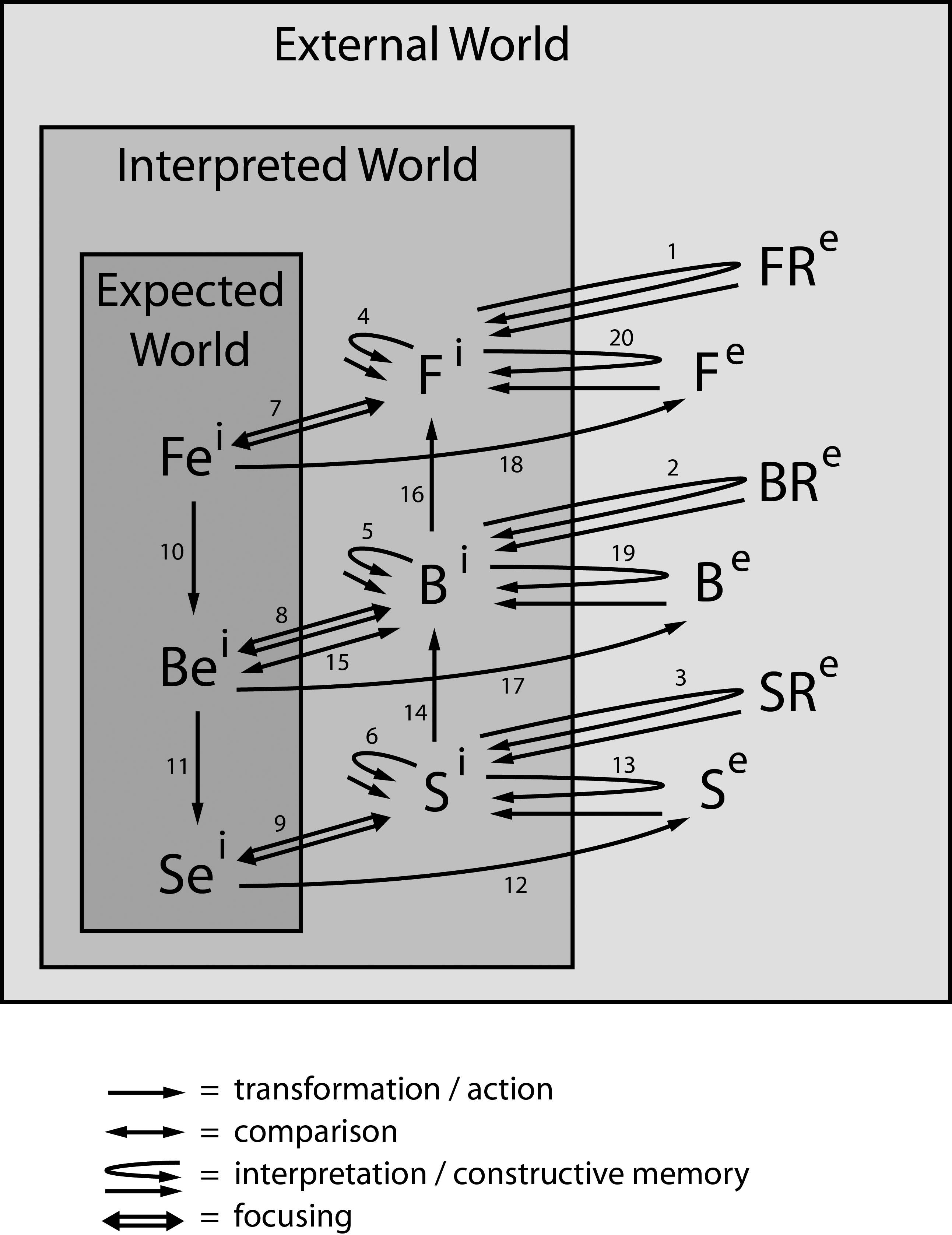
Affordances transform external structure into external behavior.
This transformation involves at least the following sub-processes
in Figure 7:
• Process 13: transforms Se into Si
• Process 14: transforms Si into Bi
• Process 15: evaluates Bi against Bei
• Process 17: transforms Bei into Be
These sub-processes compose what we call the affordance production
process. Additional sub-processes for pre- and post- processing
are required, depending on whether the affordances are reflexive,
reactive, or reflective. The differences are summarized in Table 1 and
discussed in more detail in the remainder of this section.
Reflexive Affordances
The processes involved in producing reflexive affordances are
highlighted in Figure 8.
There is no pre-processing for reflexive affordances. Bei
and Fei are pre-formulated and readily provide a pattern to be
matched by the interpretation of the artifact based on its Se. All input
parameters of Bei have fixed values. For example, Se may be a door
with specific features, Fei may be “to allow access to a room,” and
Bei may be a rotating behavior with fixed values for the direction
(say e.g., “outward”) and the amount of force one needs to apply
Figure 8
Concepts and processes (highlighted) in
to the (handle of the) door. Another example is a flight of stairs, as
reflexive affordances.
in Figure 1. Here, Se consists of the shape of the stairs, Fei may be
“to allow descent in a controlled way,” and Bei may be a “walking
support” behavior with fixed values for the input parameters
“stepping rhythm” and “speed.”
The affordance production process establishes a match
between the expectations and interpretations of the door and stairs,
and then executes the affordance. No post-process monitoring or
Table 1
Reflexive, reactive, and reflective affordances have the same production process but differ in their pre- and post-processing. Numbers refer
to the processes defined in Figure 7.
Type
Pre-Processing
Affordance Production Process
Post-Processing
Reflexive
No pre-processing required
• Input:Se
No post-processing required
• Transformation: 13, 14, 15, 17
Reactive
Any of:
• Output: Be
• Assessing the affordance: 19, 15
• Selecting Bei: 8
• Optionally, re-selecting Bei and/or
• Selecting Fei: 7
Fei by new pre-processing
Reflective
Any of:
• Assessing the affordance: 19, 15
• Constructing Bei: 5, 8, 10
• Optionally, re-constructing Bei and/or
• Constructing Fei: 4, 7, 16
Fei by new pre-processing
58
DesignIssues: Volume 28, Number 1 Winter 2012
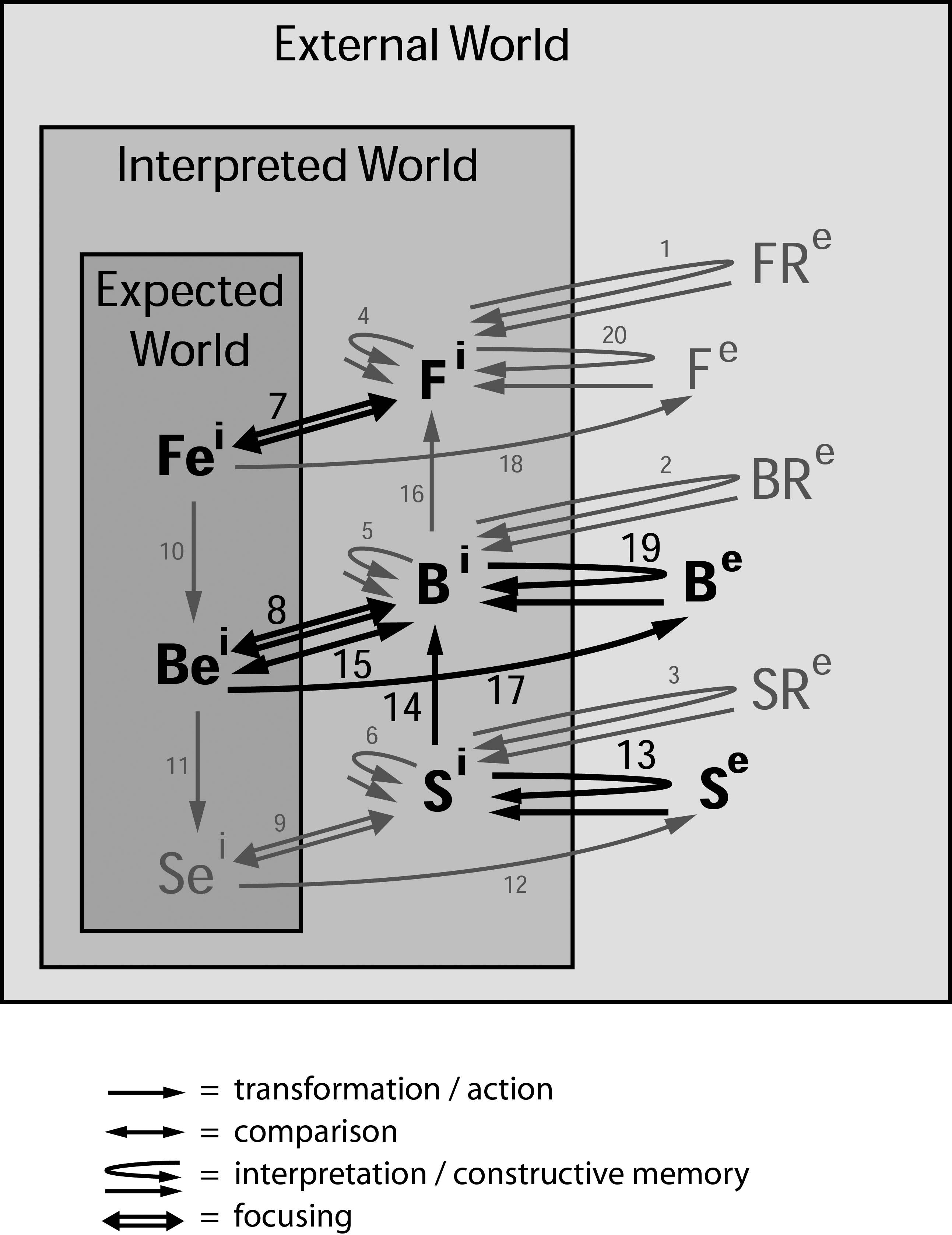
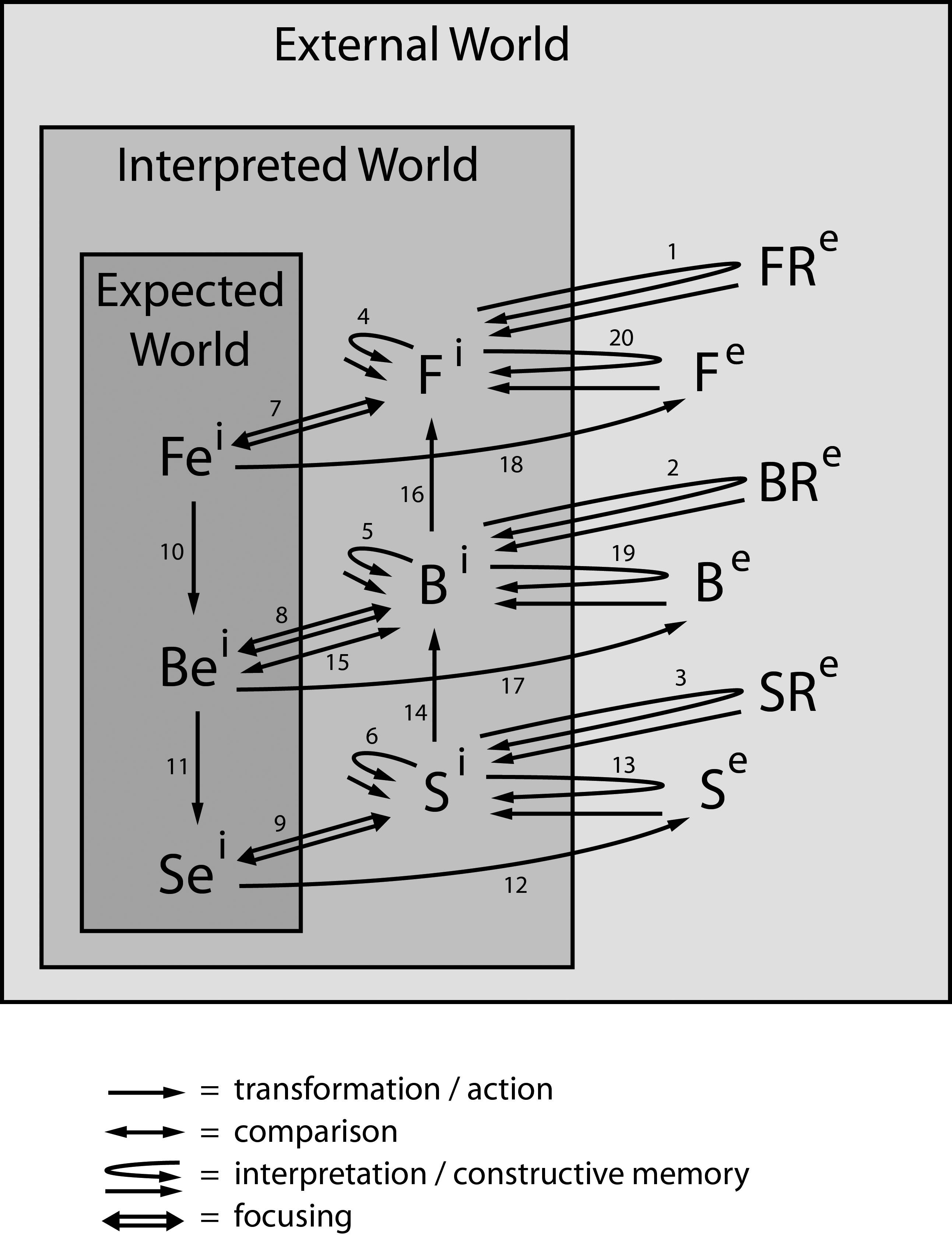
analysis of the external behavior is needed because the validation
of the affordance is assumed by default. In the door example, a
person pushes against the door to produce an external behavior
using the expected values of direction and amount of force. In the
stairs example, a person walks down the stairs to produce a walking
support behavior with the expected values for stepping rhythm
and speed. No post-process monitoring or analysis of the external
behavior is needed, as the validation of the affordance is assumed
by default.
Reactive Affordances
The processes involved in producing reactive affordances are
highlighted in Figure 9.
Pre-processing for reactive affordances includes selecting
from among alternatives to formulate Fei (process 7 in Figure 9) or
Bei (process 8). Alternative Fei for doors may include “to allow access
to a room” and “to allow exit from a room.” A choice between the
two Fei can influence the selection of alternative Bei input parameters
such as pushing (i.e., “outward” direction) or pulling (i.e., “inward”
direction) a specific door. Here, let us assume that the value
“outward” is selected for the “direction” parameter of Bei, based on
choosing “to allow exit from a room” as Fei. In the stairs example,
the person may have the choice between the two specialized Fei “to
allow fast descent to catch the train” and “to allow descent without
Figure 9
Concepts and processes (highlighted) in reac-
spilling your cup of coffee.“ This has an impact on the selection of a
tive affordances.
value for “speed” in the stairs’ Bei. Let us assume that a low value is
selected to avoid spilling coffee.
Post-processing includes the interpretation of Be resulting in a
new Bi (process 19), and evaluation of that Bi against Bei (process 15).
These processes are necessary to test whether the selected affordance
is appropriate. If the affordance “succeeds,” no further processes are
needed in the scope of that affordance. For example, pushing against
the door might produce the expected rotating behavior, which is
perceived and evaluated as satisfactory. Walking down the stairs
with reduced speed may successfully avoid spilling any coffee.
If the affordance “fails” the test, three possible consequences
result. One consequence might be the selection of previously
unselected values of input parameters of Bei, leading to the repeated
generation of variants of the same type of affordance (process 8).
For example, if pushing against the door is unsuccessful, the person
might choose to pull instead of push (i.e., changing the value of
the “direction” parameter to “inward”) and then to execute and test
this new variant of the affordance. This scenario can be viewed as
an instance of a discrete control system. In the stairs example, if the
person spills coffee while walking down the stairs, the value for the
“speed” parameter may be further reduced, and the consequences
of this change are then monitored and assessed. This scenario can be
viewed as an instance of a continuous control system.
DesignIssues: Volume 28, Number 1 Winter 2012
59
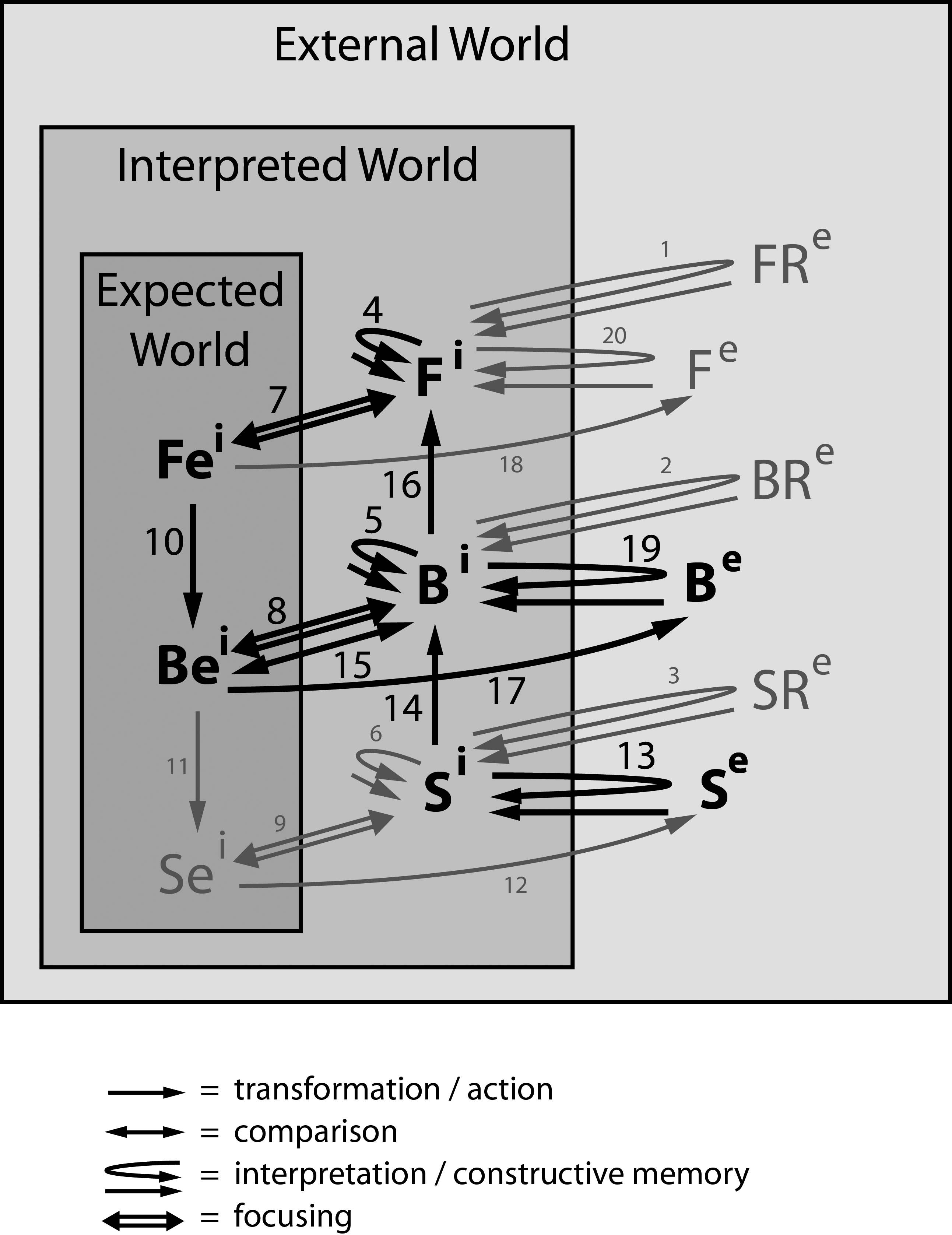
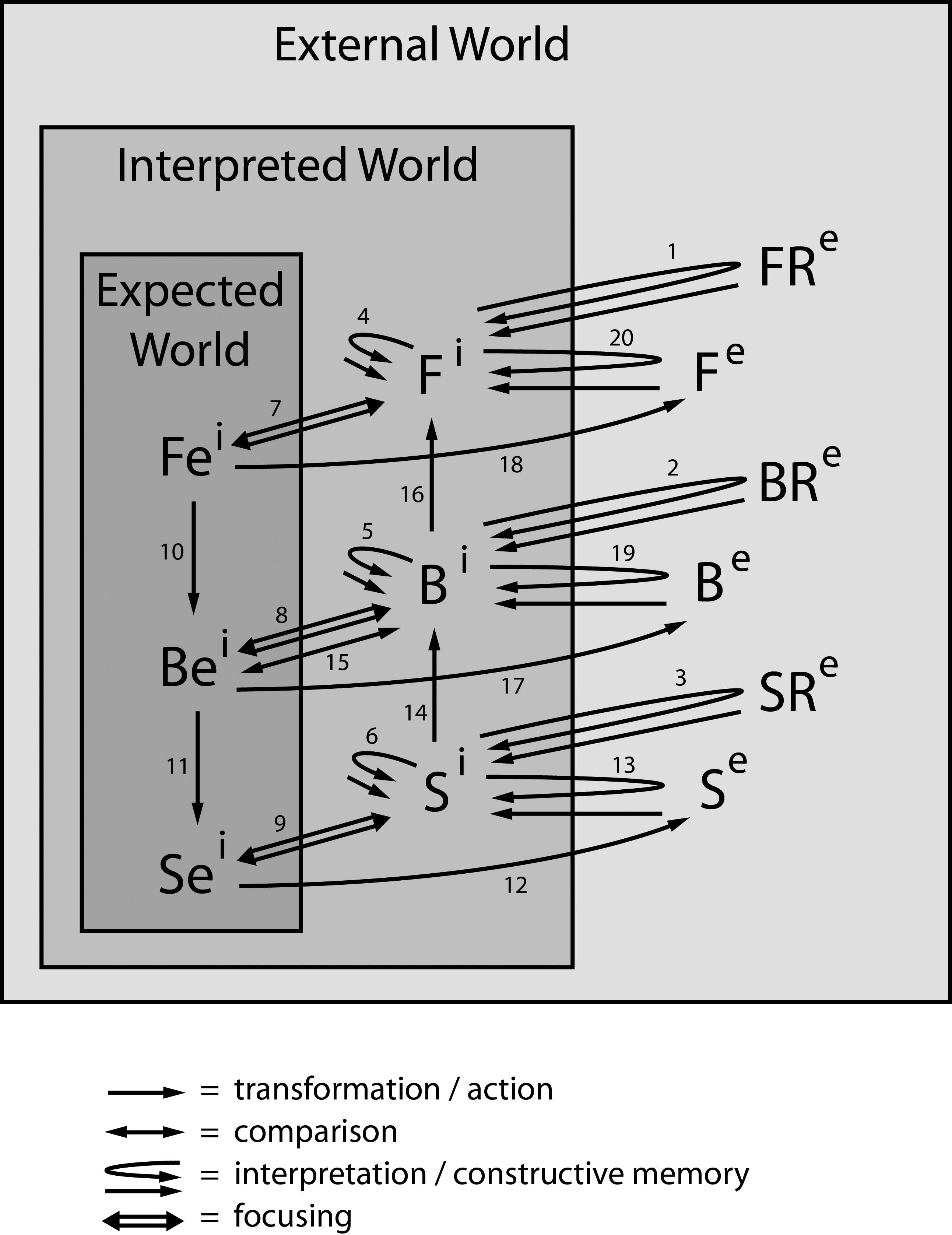
Another consequence of a “failed” affordance may be the
reformulation of input parameter values of Bei by including new yet
previously known alternatives (process 8). This change can expand
the space of possible affordances. For example, if both possible
directions of the force on the door fail, the person might increase
the expected amount of force so that it exceeds the initial range. In
the stairs example, the person might choose to change the stepping
rhythm, thus relaxing a previously fixed input value of the stairs’
behavior.
A third consequence may be to modify the selection of Fei
(process 7) when re-selecting Bei is not successful. Most commonly,
this results in the original Fei being dropped. For example, the
functions “to allow exit from a room” and “to allow descent without
spilling your cup of coffee“ may be dropped when the door cannot
be opened and the stairs cannot be descended without spilling
coffee, respectively.
The class of reactive affordances subsumes the class of
reflexive ones. It augments the latter by providing the potential
to repeatedly select affordances and to reformulate the ranges of
parameter values of expected behaviors.
Reflective Affordances
The processes involved in producing reflective affordances are
highlighted in Figure 10.
Figure 10
Concepts and processes (highlighted) in
Pre-processing for reflective affordances includes more
reflective affordances.
processes than for reactive and reflexive ones because Fei and/or
Bei are not pre-formulated and cannot be selected from existing
alternatives. These processes generate expectations depending on
the current situation, leading to new or unfamiliar Fei and Bei. In
the door example, the person’s changing expectations from the
“rotating” behavior to a new “sliding” behavior results from a
process of reflecting on behavior (process 5 in Figure 10) and then
focusing on that behavior (process 8). Introducing a function of
“preventing other people from accessing a room” is a consequence
of reflecting on function (process 4) and focusing on that function
(process 7). Based on this new Fei, the person might then derive
the expectation of a “locking” behavior (process 10) that affords a
specific rotating motion of a key. In the stairs example, the person
might similarly generate the new function, “to allow resting,” by
reflecting and focusing. A new “seating support” behavior can
then be derived from this new function. The input parameters of a
reflectively produced Bei might include specific, fixed values (e.g.,
“leftward” direction of a force for sliding the door), and/or ranges
of values (e.g., variable amounts of force).
Post-processing includes at least the processes of interpreting
(process 19) and then evaluating (process 15) an affordance via the
associated artifact behavior. In addition, there is the potential for
60
DesignIssues: Volume 28, Number 1 Winter 2012
reconstructing expectations by formulating new Bei and Fei, and
hence constructing new types of affordances. A frequent precursor
of reformulation is the discovery that an observed (i.e., interpreted)
behavior can be useful because a new, interpreted function (Fi) can
be derived from it (process 16). An example of such a serendipitous
discovery is when a sliding door is pushed too far to the side
and slips from the end of its sliding rail. This behavior might
be interpreted as useful when the door needs to be removed for
replacement or repair. Recognizing the utility of this behavior can
be represented as deriving the function “to allow easy removal,”
which may or may not have been intended by the door’s designer.
Sitting on stairs can similarly lead to the interpretation of a new
behavior. For example, assuming that the stairs may have warmed
up in the sunlight, their raised temperature can be sensed by sitting
on them. This corresponds to a new behavior, which could not have
been discovered simply by walking on the stairs (in footwear). A new
function, “to allow warming of the human body,” may be derived
from this behavior.
The class of reflective affordances subsumes the class of
reactive ones. It augments the latter by providing the potential for
reformulating expected functions and for reformulating expected
classes of behaviours. Reflective affordances can shift the space
of possible affordances into previously unexpected or unknown
regions. Reformulations can occur at any time, potentially moving
affordances from being reflexive or reactive to reflective.
Conclusion
Affordances, the short-hand term used to mean “perceived
af ordances” in this paper, are not fixed properties but the results
of dynamic processes that constitute a user’s interactions with an
artifact. This paper has presented three types of affordances that
vary in their ability to deal with the dynamics of these interactions.
Reflexive affordances assume a static world that provides a close
but rigid fit between action possibilities and artifacts. Reactive
affordances allow for variation in the selection of action possibilities,
integrating feedback provided by the resulting artifact behavior.
Reflective affordances can generate new worlds of action possibilities
through reflection and through exploratory discovery of possible
behaviors. The three types of affordances are related through
subsumption: Reflective affordances subsume reactive ones, and
reactive affordances subsume reflexive ones. Reflective affordances,
through their use, tend to become reactive and then reflexive, but
there is always the potential for affordances to move the opposite
way, too, as a user’s situation changes. Thus, the range of use for a
design can expand beyond what was intended by the designer.
Our framework is a synthesis of conceptual ideas related to
situatedness in designing. While some of these ideas are based on
cognitive studies of designing, more work needs to be done toward
DesignIssues: Volume 28, Number 1 Winter 2012
61
validating our framework. Representing and experimentally consoli-
dating the three types of affordances can enhance understanding of
affordances, which facilitates progress in two broad areas of research.
One area is research into new methods and tools for
affordance-based design. For example, existing affordance-based
design methods may be extended to include better support for
the adoption of creative designs. Creative designs, by definition,
provide novel functionalities and often provide novel ways for
users and artifacts to interact. “Preparing” the user to easily
identify appropriate affordances for a new interaction is crucial for
the adoption of a creative design. Our framework presents a set of
pre-processing steps that can be targeted when designing, realizing,
or marketing creative artifacts.
Another possible research direction is the development of
models of user-driven innovation that may be used to stimulate
design creativity. These models may be implemented as agent-based
systems that simulate possible user interactions and thus generate
opportunities for discovering new functionalities and features
of a design. A necessary condition for such simulations is the
integration of the user’s situations before and after an affordance
is produced because they al ow for recursive interactions that are
often the precursor for user innovation. Our description of pre-
and post-processing steps can be used as a blueprint for building
such a system.
Another area of research that can benefit from our work
is the development of affordance-based agent interaction. For
example, research in robotics has already started using the idea of
affordances in robot control systems, focusing on robot navigation
and task execution.26 Currently, most of these approaches are
based on pre-coded affordances. Using our framework, they map
onto reflexive or reactive affordances but not onto reflective ones.
Although robots have been built that can explore new affordances
of tools by trying out and then grounding possible actions,27 these
exploratory activities are not driven by changes in the robots’ goals
and expectations. As a result, the adaptability of the robots in new,
unstructured environments is very limited. Current affordance-based
architectures for agents in virtual environments are subject to similar
limitations. We can identify reflective affordances as a precondition
that can lead to more ef ective deployment of agents in dynamic
environments.
26 E. Rome, J. Hertzberg and G. Dorffner
(eds), Towards Affordance-Based Robot
Acknowledgements
Control, LNAI 4760, (Springer-Verlag,
Berlin, 2008).
This work is an outgrowth of research supported by a grant from the
27 A. Stoytchev, Learning the Affordances
Australian Research Council, grant no: DP0559885.
of Tools Using a Behavior-Grounded
Approach, in E. Rome, et al. (eds)
Towards Affordance-Based Robot
Control, LNAI 4760, (Springer-Verlag,
Berlin, 2008), 140-58.
62
DesignIssues: Volume 28, Number 1 Winter 2012














